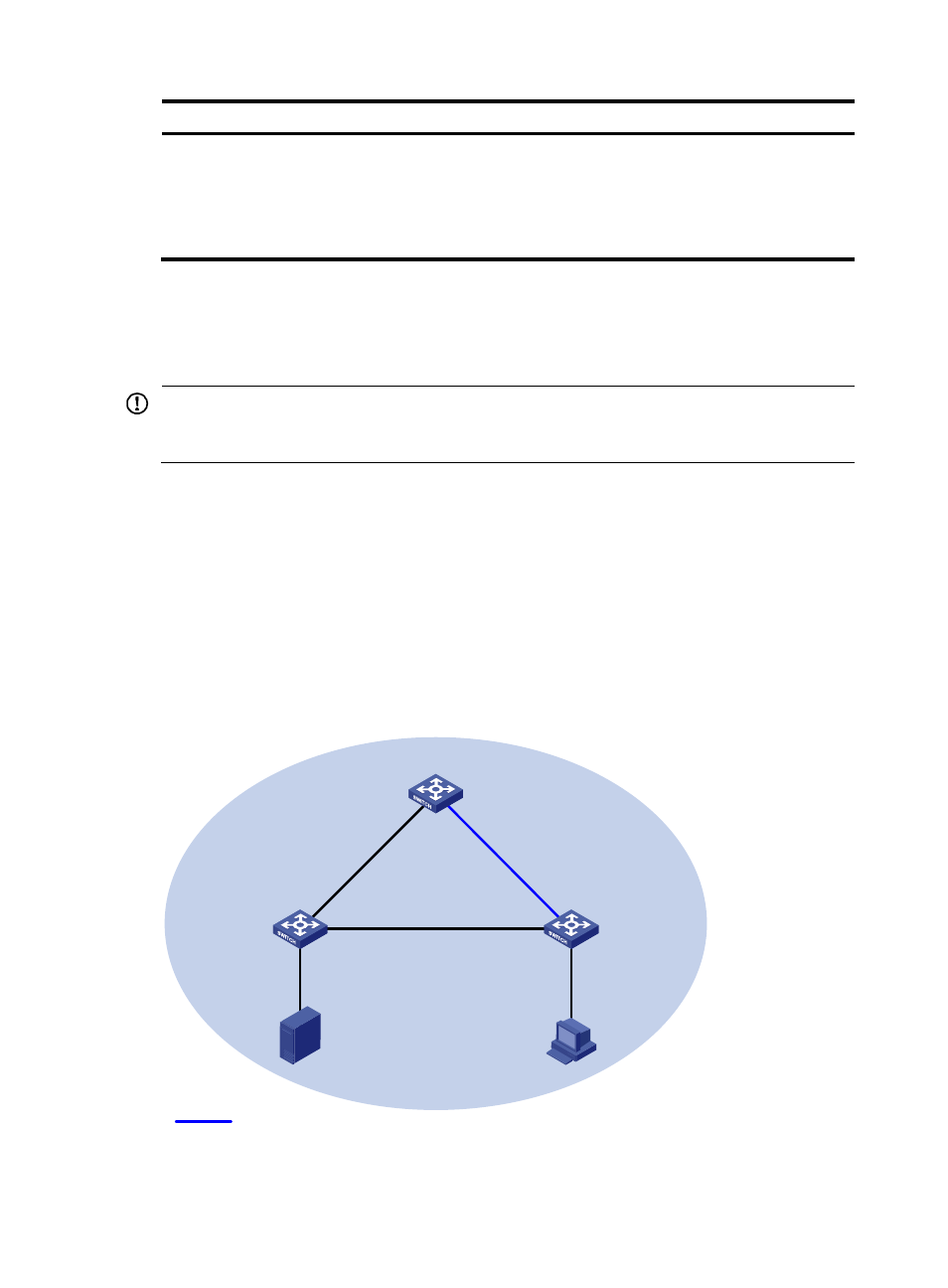Configuration examples, Changing an rpf route, Network requirements – H3C Technologies H3C S12500 Series Switches User Manual
Page 89

73
Task Command
Remarks
Clear routing entries
from the multicast
routing table.
reset multicast [ all-instance | vpn-instance
vpn-instance-name ] routing-table { { source-address
[ mask { mask | mask-length } ] | group-address
[ mask { mask | mask-length } ] | incoming-interface
{ interface-type interface-number | register } } * |
all }
Available in user view.
When a routing entry is
deleted removed, the
associated forwarding entry
will also be removed.
For more information about designated forwarder (DF), see "Configuring PIM."
Configuration examples
IMPORTANT:
By default, Ethernet interfaces, VLAN interfaces, and aggregate interfaces are in the state of DOWN. To
configure such an interface, use the undo shutdown commands to bring it up first.
Changing an RPF route
Network requirements
As shown in
, PIM-DM runs in the network. All switches in the network support multicast. Switch
A, Switch B and Switch C run OSPF. Typically, Receiver can receive the multicast data from Source
through the path: Switch A to Switch B, which is the same as the unicast route.
Perform the following configuration so that Receiver can receive the multicast data from Source through
the path: Switch A to Switch C to Switch B, which is different from the unicast route.
Figure 27 Network diagram
Multicast static route
Switch A
Switch B
Switch C
Vlan-int102
30.1.1.2/24
Vlan-int103
40.1.1.2/24
Vlan-int200
50.1.1.1/24
Vlan-int103
40.1.1.1/24
Vlan-int101
20.1.1.2/24
Vlan-int101
20.1.1.1/24
Vlan-int102
30.1.1.1/24
Vlan-int100
10.1.1.1/24
Source
Receiver
50.1.1.100/24
10.1.1.100/24
PIM-DM